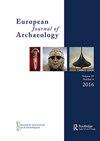野生动物问题:认识欧洲第一批农民的意义
IF 1.4
2区 历史学
0 ARCHAEOLOGY
引用次数: 0
摘要
家畜的出现是新石器时代的一个重要特征。它们最早出现在整个欧洲大陆的考古背景中,通常被解释为反映了农业实践。然而,家畜经常逃跑,存活下来,变成野兽。本文以北美殖民地为例,旨在说明当牲畜被引入一个新的大陆性温带环境时会发生什么。作者从历史和考古的双重角度,重申并详细阐述了野生动物几乎肯定是欧洲新石器时代进程的一个特征。本文章由计算机程序翻译,如有差异,请以英文原文为准。
The Feral Animal Question: Implications for Recognizing Europe's First Farmers
The presence of domestic animals is a key feature of the Neolithic. Their earliest presence in archaeological contexts across the European continent is often interpreted as reflecting farming practices. However, domestic animals often escape, survive, and become feral. Using the comparative example of colonial North America, this article's aim is to illustrate what happens when livestock are introduced to a new, continental temperate environment. Taking a dual historical and archaeological perspective, the author reiterates and elaborates on the suggestion that feral animals were almost certainly a feature of the European Neolithization process.
求助全文
通过发布文献求助,成功后即可免费获取论文全文。
去求助
来源期刊

European Journal of Archaeology
ARCHAEOLOGY-
CiteScore
3.40
自引率
6.70%
发文量
58
期刊介绍:
The publication organ of the European Association of Archaeologists, the European Journal of Archaeology seeks to promote open debate amongst archaeologists committed to a new idea of Europe in which there is more communication across national frontiers and more interest in interpretation. The journal accepts not only new empirical data and new interpretations of the past but also encourages debate about the role archaeology plays in society, how it should be organized in a changing Europe, and the ethics of archaeological practice. All periods are covered; papers, review articles, interviews and short "debate" pieces are all sought. Whilst English is the primary language of publication in the EJA, papers submitted in French or German will be given equal consideration.
 求助内容:
求助内容: 应助结果提醒方式:
应助结果提醒方式:


